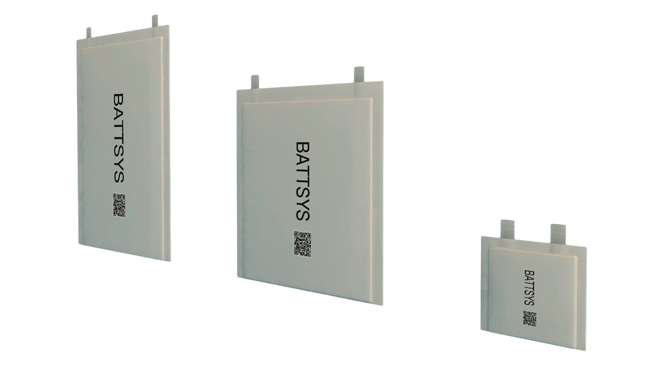The principle of polymer lithium battery.
Polymer lithium batteries are a type of battery that uses polymers as electrodes and electrolyte materials. Depending on the materials used for the positive and negative electrodes of the battery, there are many different types of polymer batteries.
Polymer lithium batteries have higher energy density, can be miniaturized and thin, lightweight, high safety, and low cost. Polymer lithium batteries use polymer materials as the main battery system in at least one or more of their constructions.

Liquid lithium-ion batteries (Li ion) are widely used as efficient energy carriers in the communication and electronics industries, especially in personal communication tools such as mobile phones and PDAs. However, in the past year or two, with the rapid development of communication technology, mobile phone color screen technology, multimedia messaging technology, Bluetooth technology, and camera technology have emerged one after another, which have put forward higher requirements for battery capacity, volume, weight, and electrochemical performance indicators. Traditional liquid lithium batteries are increasingly unable to meet new demands. The emergence of new polymer lithium-ion batteries (Li Poly) caters to this demand. Polymer lithium batteries are the third generation lithium-ion batteries developed on the basis of existing steel and aluminum shell batteries. They are favored by communication terminal manufacturers and design companies at home and abroad for their lighter, thinner, and higher energy density characteristics. The fundamental difference between polymer lithium-ion batteries and liquid lithium-ion batteries lies in the different electrolytes used. The electrolyte of polymer lithium batteries appears solid from the appearance and is called polymer solid electrolyte. This electrolyte is a type of polymer material that is in a solid state but can dissolve supporting electrolytes like a liquid and undergo ion migration.
In terms of shape, polymer lithium batteries have multiple advantages such as thinning, arbitrary area, and arbitrary shape. Firstly, the negative electrode material carbon not only has a wide range of sources, but also enables the battery to achieve high-speed discharge effect; The second reason is that lithium ions are embedded in carbon, which solves the problem of unsafe lithium-ion batteries; Thirdly, it has good comprehensive performance and fast charging speed.
Polymer lithium-ion batteries have high plasticity in appearance, are ultra light, ultra-thin, high-capacity, leak free, and highly safe. They are also lead-free, mercury free, cadmium free, and other toxic elements, making them truly environmentally friendly batteries that do not cause any pollution to the environment.

High safety LiFePO4 battery,long cycle life,Fast Charging

High rate Discharge,fast charge,long cycle life

High safety performance. Wide voltage coverage range,4.2~4.4V serises.
E-Mail: inquiry@fentbattery.com
Tel: 0086 20 3901-1403
Address: No.3, Dongli Road, Xili, Dongyong Town, Nansha District, Guangzhou City, China
Copyright@ China lithium ion battery manufacturers & suppliers & producers | Lithium Battery Factory & Company-BATTSYS Sitemap